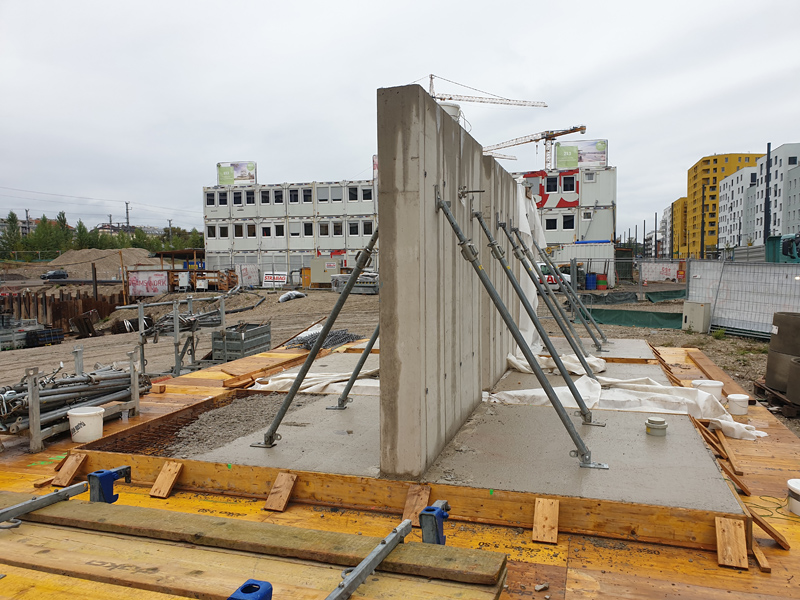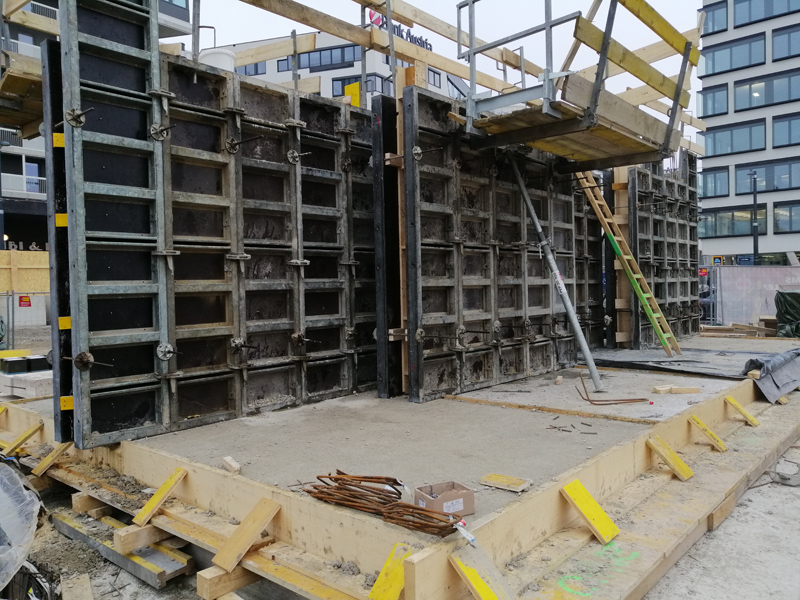RCC – Reduced Carbon Concrete: Implementation of CO2-redudes concrete in construction sites
Short Description
Concrete and cement production are of considerable environmental relevance; at the same time, concrete is by far the most widely used building material worldwide. Austria has an annual cement consumption of 5.2 million tons and emits approximately 2.9 million tons of CO2 per year for its production (MAUSCHITZ, 2020, p. 7, 7a). Decarbonization of the construction industry is a global issue. The present project is intended to make a contribution to this.
The research objective is the use of "performance concrete" as CO2-reduced concrete (RCC - "reduced carbon concrete") with a lower cement content. In contrast to conventional concretes, the technical equivalence has to be proven by the technical properties ("performance"). The basis, in addition to ÖNORM B 4710-1, is the future ONR 23339 "Rules for the implementation of the concept of equivalent concrete performance". This standard will set the framework, how to compensate the delayed early strength development of RCC concrete by suitable curing measures at the construction site.
In two series of tests, structural elements designed according to the RCC concept with a 25% reduction of CO2 were compared with conventionally designed structural elements of the same design. This empirical research under practical conditions on a construction site under summer and winter temperatures and in a precast concrete plant aimed at practical findings on the "real crete" and not on the "lab crete".
RCC concretes can be processed into wall and floor elements just as well as conventional concrete, as tests for the summer and winter cases have shown. The flow behavior in the formwork was basically the same, although in the precast element the concrete did not have the desired flow behavior due to the delivery time. The strength characteristics (compressive strength, modulus of elasticity, etc.) of the concrete after 28 days corresponded to those of conventional concrete mixes. The early strength in the first 28 days decreased at first slightly at outdoor temperatures below 20°C, then significantly between 5-12°C. Below 0°C, use without special measures is not recommended. Detailed recommendations for summer and winter construction sites were defined. Another finding was that rapid stripping and covering of RCC walls is better for rapid curing than a longer forming time. And: the results of the site tests corresponded well with the laboratory tests, which were carried out in advance and in parallel with the in-situ tests. The monitoring of early strength development by integrated temperature sensors in the formwork was essential for estimating and determining concrete maturity, as curing rates can be extrapolated via concrete core temperature.
In the scenarios investigated at the Taborama residential project at Vienna's North Station, the potential for CO2 reduction through RCC application is between 13% and 20% for the entire building with approximately 200 apartments. This corresponds to a saving of about 500 t CO2 equivalent for the building or 2.5 t CO2 per apartment. The case study shows that RCC concretes are easily suitable for 50% of concrete applications. A CO2 reduction of 25% for half of the concrete used would reduce cement-related CO2 emissions in Austria by 12.5%. In Germany, cement consumption per capita is calculated based on domestic cement shipments. According to the Association of the German Cement Industry (VDZ), approximately 28 million tons of cement were shipped domestically in 2020. This results in a per capita consumption of 350 kg per year. Applied to Austria, with domestic cement shipments in 2020 of 4.8 million t (VÖZ II, 2021), per capita consumption amounts to 538 kg or a total of 2.7 million t CO2. With RCC concrete as the state of the art, cement-related CO2 emissions in Austria could be reduced by 340,000 tons.
The recommendations from this research project are addressed to the construction and concrete industries. In the latter, common boundary conditions for the performance concept of RCC concretes should be created as quickly as possible as the new state of the art.
Project Partners
Project management
- Strabag Real Estate GmbH
Project or cooperation partners
- bauXund forschung und beratung gmbh
- Dr. Ronald Mischek ZT GmbH
- forschen planen bauen DI Thomas Romm ZT
- Materialprüfanstalt Hartl GmbH
- STRABAG SE
- SV Dr. Johannes Horvath
- Wopfinger Transportbeton GmbH
Contact Address
DI Lukasz Kujawa
Donau-City-Straße 1, A 1220 Wien, Austria
Tel.: +43 1 22422-7205
Email: lukasz.kujawa@strabag.com
www.strabag-real-estate.at


